Our planet was born 4.55 billion years ago. The Laurentians appeared about 1,2 billion * years ago . Our lakes, about 10,000 years ago. Our association celebrates its 60th anniversary this year. And our lakes are all still very healthy.
The health status of a lake is divided into 5 main categories, as illustrated on this Clear Lake chart in 2022. They are: , ultra-oligotrophic (excellent), oligotrophic (very good), mesotrophic (problematic) , eutrophic (agonizing), hyper-eutrophic (dead).

The results of samplings last summer show lakes in the oligotrophic category. About a third of the lakes surveyed by the RSVL fall into this category. Few lakes are in the ultra-oligotrophic category and they are found in remote and sparsely populated areas.
There are two fundamental measures to define the health of a lake: the concentration of phosphorus and chlorophyll (microscopic algae in suspension). Both measured in micrograms/litre (μg/litre).
To be classified as ultra-oligotrophic, a lake must have a phosphorus concentration of less than 4 μg/litre and a chlorophyll concentration of less than 1 μg/litre.
About Clear Lake
Clear Lake meets the first criteria (3.9 μg/litre) but not that of chlorophyll which reaches 1.7 μg/litre.
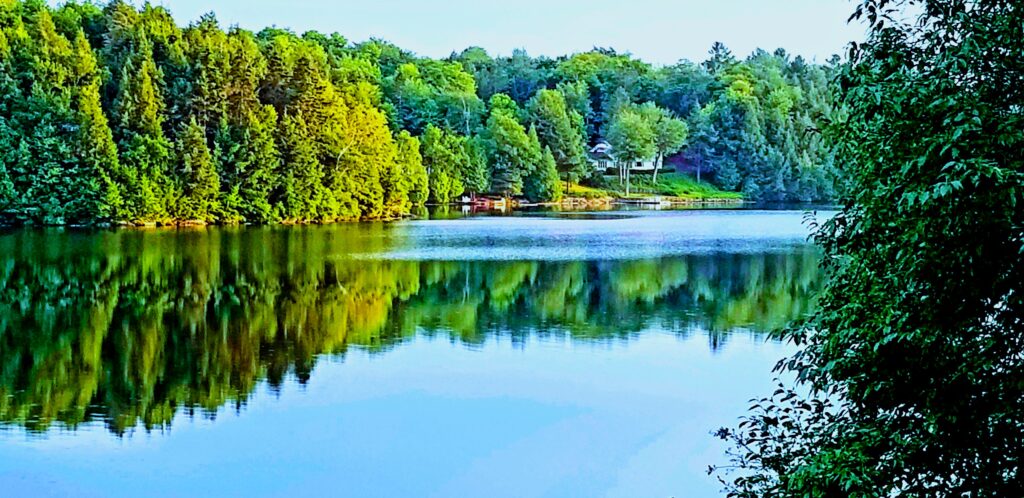
To these two criteria must add a third which is transparency. In Clear, it generally averages more than 6 meters but not in 2022 (5.9 meters). In short, if the chlorophyll was at 1 μg/litre like it was in 2021 with total phosphorus at 3.9 μg/litre and transparency 6 meters, the lake would be in the ultra-oligotrophic category! If Clear Lake shows such good results, it is also because it is deeper than the other lakes and contains a lot of water to dilute nutrients, nearly twice as much as in Curran Lake.
Now let’s go to Boyd and Black lakes. Two smaller lakes that are also very popular with beavers!
A look at Boyd Lake
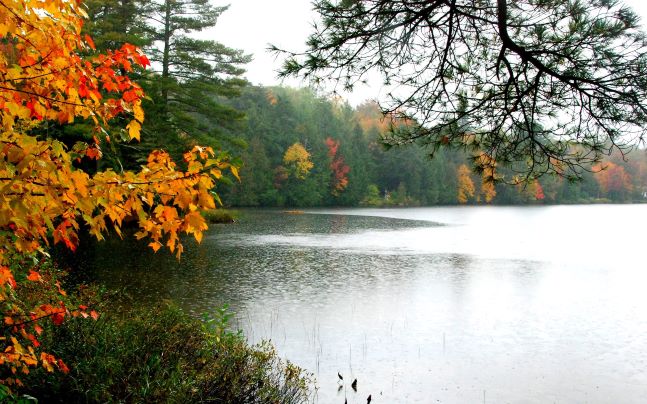
Boyd Lake has a phosphorus level of 4.5 μg/litre and chlorophyll is only 1.5 μg/litre, but since its renewal time is very short (6 months), particles are constantly added and remain in suspension. Consequently, clarity often suffers. The renewal times of the other lakes is around 2 years.
And Black Lake
The Black Lake data are nearly identical. Total phosphorus 4.4 μg/litre and chlorophyll 1.6 μg/litre. What characterizes Black Lake is its higher rate of dissolved organic carbon (6 mg/litre vs 3.2 at Boyd Lake), which indicates that the water is colored. This is not a problem in itself; simply an observation that explains why transparency is lower than elsewhere. A lake that lives up to its name!
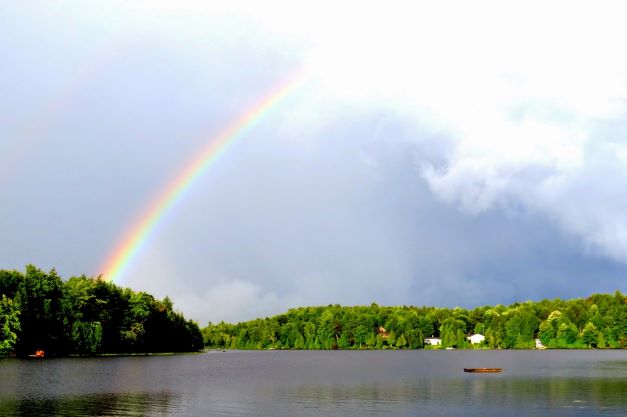
Dissolved organic carbon (DOC) comes from the decomposition of organic matter (plants, microorganisms, dead animals, contaminants brought by humans) responsible for the yellowish or brownish color of the water. It makes it possible to determine the evolution of organic pollution which, in high concentration, affects the oxygen reserves in the water.
Curran Lake
I kept Curran Lake for dessert. Its area is half a square kilometre, about the same as Clear’s. The results for 2022 are very good. Total phosphorus 3.9 μg/litre is lower than in past years. Chlorophyll 1.8 μg/litre, about the same as in other lakes. The transparency of 5 meters is in line with that of years past. As you may suspect, this number varies from year to year.
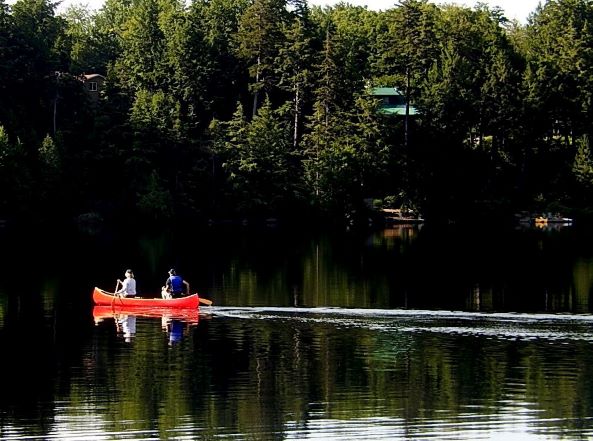
One thing is certain, vigilance is always required. It only takes a few degraded septic tanks, a boat contaminated with Eurasian Watermilfoil to create a major problem.
If you rent a cottage or lend it to friends, make sure they are familiar with lakeside behaviour as described in the Living in Dunany document.
The collection of the samples to generate this data requires the collaboration of volunteers from each lake that France and I wish to thank publicly. They are François Côté on Clear, Bonnie Swaine on Boyd, Jim and Lois Finch on Black and André Therrien on Curran. A great bunch of volunteers!
And many thanks to all of you. Your good practices make an invaluable contribution to this very good health report.
- Hubert, C. (2011). Histoire géologique des Laurentides. Presses de l’Université du Québec.
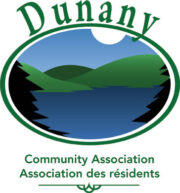
Excellent results! Thank you Jacques, France, François, Bonnie, Jim, Lois and Andy. Appreciative your efforts in keeping an eye on the lakes. Wonderful!
Wonderful to see the results! Thank you Jacques, France and your amazing team of caring volunteers.
Excellent analysis and explanations of this year’s results. Thanks Jacques.
As well, thanks to our lake testers. Your efforts are greatly appreciated.
Thanks Jacques
Thank you Jacques! A very informative article. We are lucky to have a dedicated team of volunteers involved in water testing and communication.
Liked to read the analysis and to see that it;s mostly good news, or better than good news. Thanks to the analysts who do all the work in measuring and researching all this information. Here’s wishing a long life to all of our lakes.
Thank you Jacques for this report, it makes me very happy to see how well the lakes are doing! We are all so fortunate for this and I hope we all continue to do our part to keep it this way. Thank you all for all you do to make this possible! I am grateful to live in such a beautiful place and how we all value it and consciously do what is needed to keep it healthy!
Thank you for a very clear and thoughtful report. The optimism and your encouragement inspires us to be more and more careful.
Great read Jacques!!! The science behind this is amazing!
Jacques a very interesting article .
It’s good to know that most if not all residents are diligent in maintaining our beautiful bit of paradise.
Thanks to you , France and the others for keeping it so
See you soon
John and Jane McMerty
Clear Lake